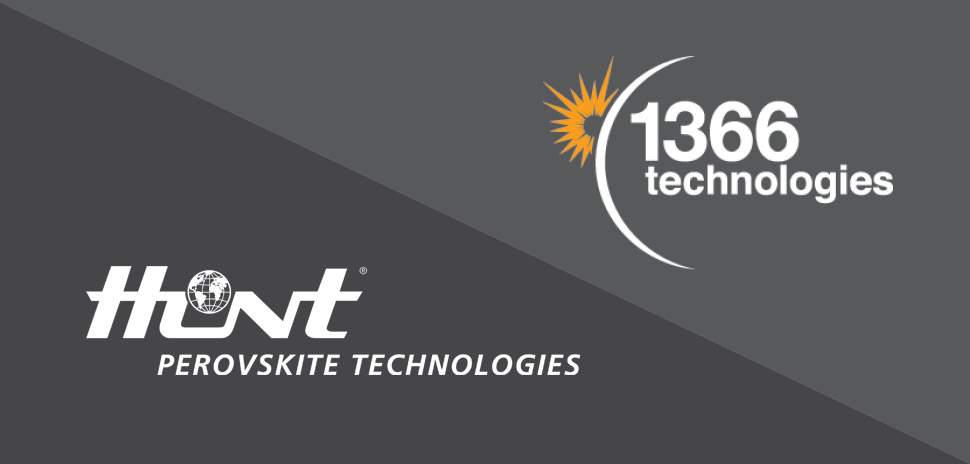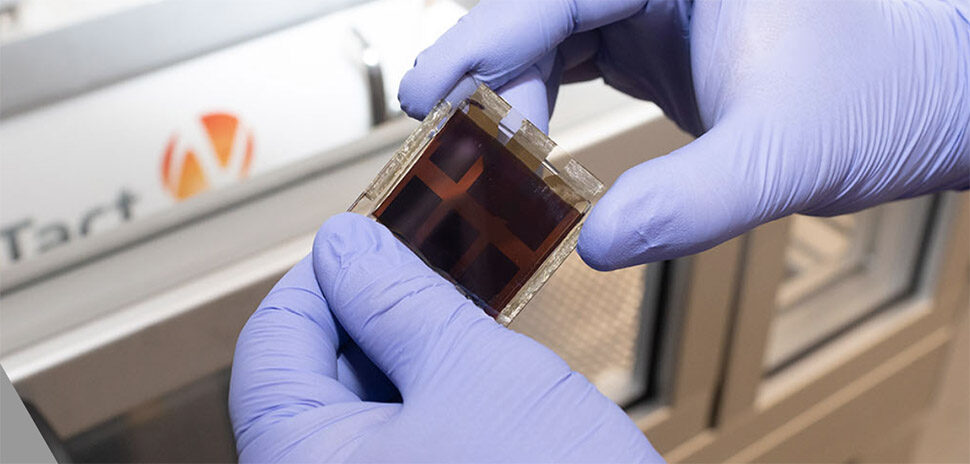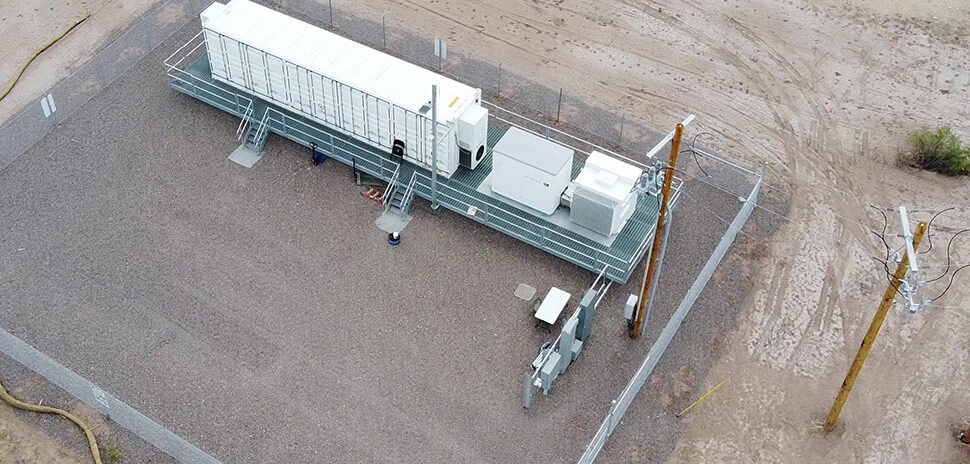Two of the most innovative companies in solar—Hunt Perovskite Technologies and 1366 Technologies—have completed a deal to merge their businesses, bringing technology to market that could lead a rapidly growing industry.
The newly combined company, set to be named CubicPV, will receive $25 million in funding from Hunt Energy Enterprises (HEE), First Solar, Breakthrough Energy Ventures, North Bridge Venture Partners, and Polaris Partners. HEE will also join the Board of Directors.
The CubicPV offices will be held in Hunt Perovskite Technologies and 1366 Technologies’ headquarters—Dallas and Bedford, Massachusetts—that are set to be helmed by Frank van Mierlo, the current CEO of 1366 Technologies.
“This agreement will unite two of the solar industry’s most disruptive technologies to dramatically boost the energy harvest and drive down costs of solar installations, helping to meet the world’s electrification and climate goals,” Michael D. Irwin, CTO of HPT and now CubicPV, said in a statement. “The value of our combined assets will write the next chapter for clean solar energy and underpin a massive industry that leads through innovation and cooperation to enable the leap to tandem PV.”
Dallas-based Hunt Perovskite Technologies (HPT) was created and incubated within HEE, the energy technology venture business unit from Hunt, the larger, privately-owned group of companies managed by the family of Ray L. Hunt, the American heir and businessman.
Hunt engages in oil and gas exploration, refining, power, real estate, ranching, and private equity investments.
HPT specializes in the development of highly stable and efficient metal halide perovskite materials. The goal is to use those materials in single-junction PV solar panels for the utility-scale market.
In April, HPT received $2.5 million in funding from the United States Department of Energy’s perovskite initiative. For the project, HPT is working to demonstrate the manufacturability, scaling, durability, and chemical safety of perovskite photovoltaic (PV). The team will develop highly efficient, durable, and lead-safe perovskite solar PV modules using HPT’s slot-die coating manufacturing process.
Science Daily describes halide perovskites as soft and flexible materials that could make solar cells more efficient at a significantly less cost. If validated, the tech could make solar cells more efficient at a lower cost.
This is an issue that CubicPV plans to focus on.
Bedford, Massachusetts-based 1366 Technologies is a provider of its own Direct Wafer technology. The company describes it as a way to make a superior class of silicon wafers, which are the building blocks of solar cells. These replace a “decades-old solar manufacturing process,” and have a significant cost advantage for cell and module manufacturers that want to win in the age of terawatt solar.
“Our singular Direct Wafer process is the crucial advantage in making tandem modules a reality and with the HPT merger, we have the blueprint for achieving economically-viable, tandem solutions for terawatt-scale,” van Mierlo said in a statement. “Since their founding, both companies have championed the importance of low-cost manufacturing innovations to achieving the world’s energy transition goals.”
Over the last two years, 1366 has been working toward a ‘tandem future,’ where its Direct Wafer technology would play a role in making tandem modules a reality.
Tandem technology—also called multi-junction—layers two light absorbers into one device, rather than using only one light absorbing material (like silicon) to convert sunlight to electricity. Tandem is said to boost the power output of the end panel by 30 percent.
Here’s why that’s important, according to the company:
Perovskite materials have tremendous potential in single junction devices given their inherent cost advantages and are ideal for tandem modules due to their highly-tunable light absorption properties.
It is the latter that allow perovskite semiconductors to effectively capture the sun’s visible light as a tandem top cell while Direct Wafer products provide the optimum low-cost bottom cell to harness the infrared portion of the solar spectrum. In a tandem structure, the bottom layer produces one-third of the device’s energy but still carries 100 percent of the production cost.
It is here where the Direct Wafer cost advantage is essential.
Merging with HPT will allow 1366 to “pave a path to long-term tandem leadership,” the company says. Its new name even reflects that: CubicPV reflects the shared cubic crystal structure of silicon and perovskite.
Perovskite technology is becoming evermore popular for its efficiency, cost, and applicability in the semiconductor industry. But, the main obstacle blocking the commercialization of perovskite solar technology is durability.
HPT prides itself on excelling in this area. So far, it has developed one of the strongest global patent portfolios on the technology, with more than 160 patent assets.
“Eight years ago, Hunt made the strategic decision to focus on developing perovskite solar cells, recognizing its importance as a ‘next generation technology’ to compliment silicon and help address the world’s energy needs,” Hunter Hunt CEO of Hunt Energy, said in a statement. “By merging with 1366, we collectively are uniquely positioned to lead the industry in the development and manufacturing of affordable, durable solar technology.”
![]()
Get on the list.
Dallas Innovates, every day.
Sign up to keep your eye on what’s new and next in Dallas-Fort Worth, every day.






























